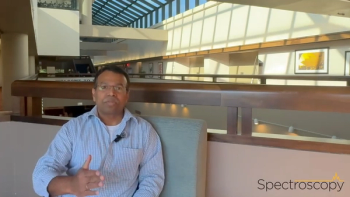
Exploring Hyperspectral Techniques and Biological Imaging Innovations at EAS
A Monday morning session at the Eastern Analytical Symposium in Plainsboro, New Jersey, highlighted hyperspectral and biological imaging techniques.
The Eastern Analytical Symposium (EAS) began on November 18 at the Crowne Plaza Princeton Conference Center in Plainsboro, New Jersey, drawing analytical scientists from around the globe. The event promises a dynamic program packed with plenary sessions, hands-on short courses, cutting-edge exhibits, and ample networking opportunities, all aimed at advancing the field of analytical science.
The technical program launched Monday with a series of sessions, including one on cutting-edge hyperspectral imaging (HSI) techniques in analytical chemistry and biological imaging. Frank Weston from Attocube Systems opened the session with a talk on vibrational spectroscopy and HSI for biomedical applications.
For years, scientists studying biological and biomedical samples with infrared spectroscopy and microscopy have grappled with diffraction-limited spatial resolutions, which vary with the wavelength of the observed light. Weston detailed the advancements of attainable spatial resolutions in infrared spectroscopy and imaging, tracing progress from millimeter-sized limitations in traditional methods to current nanoscale capabilities. Today’s innovations in spectroscopic imaging allow for high-resolution, near-field measurements that reveal biologically relevant materials and nanostructures at previously unreachable scales.
Using a variety of real-world samples, including cancer cells, bacteria, viruses, and macromolecules, researchers demonstrated both static and dynamic nano-spectroscopy and nano-imaging techniques. These new approaches enable detailed imaging of living samples in water matrices as well as fixed samples on microscope slides, all with remarkable sensitivity across visible, near-IR, mid-IR, and far-IR/THz spectral ranges. This enables precise spatial and spectral identification of biological materials and structures, enhancing our understanding of biomedical samples at the nano-level (10-9 m).
Later in the morning, Samuel Gourion-Arsiquaud, Director for Skin and Biosubstrates at TRI Princeton—a non-profit scientific research and education organization—delivered a presentation on advanced imaging techniques for cosmetic analysis, including Fourier-transform infrared (FT-IR) spectroscopy, Raman spectroscopy, and time-of-flight secondary ion mass spectrometry (TOF-SIMS). Gourion-Arsiquaud shared findings from multiple studies on products such as shampoo, bar soap, and creams.
The introduction of hyperspectral imaging in microscopic FT-IR and confocal Raman imaging has proven to be a powerful tool for examining biological samples relevant to the beauty industry, such as skin and hair, he said. This approach enables researchers to obtain detailed information on both active ingredient concentrations and molecular structure, with spatial resolution that supports a wide range of applications in cosmetics and biomedical sciences.
Gourion-Arsiquaud illustrated the versatility of these techniques through various applications. For skin testing, his team used these methods to visualize the penetration and permeation of active ingredients into different dermal layers, assessing their effects on skin barrier function, hydration, lipid organization, and the natural moisturizing factor (NMF). This allowed for comprehensive evaluations of product efficacy and safety. In hair testing, the team explored molecular and structural changes resulting from chemical treatments such as bleaching, coloring, and thermal styling, offering valuable insights into hair care products and treatments.
The session concluded with a lecture by Drew Jones, Director of the Metabolomics Laboratory at NYU Langone, who presented on the use of high-dimensional mass spectrometry imaging (MSI) to predict cancer recurrence. Jones explained that MSI is a rapidly advancing technique that enables spatial resolution and quantification of metabolites, lipids, peptides, and proteins in snap-frozen tissue samples. Each pixel in an MSI dataset represents an individual mass spectrometry analysis, allowing researchers to generate high-parameter images of molecular structures, displaying their distribution and intensity in the sample.
Jones’s team developed a machine learning (ML) approach for unbiased, unsupervised analysis of these complex datasets, which enables automatic region and cell-type annotation, as well as assessment of various clinical parameters. The team designed a deep learning convolutional neural network (CNN) architecture that treats thousands of individual ion images as a single, high-parameter dataset.Testing this model on a clinical cohort of lung cancer patients, they evaluated its ability to predict the likelihood of cancer recurrence at the time of tissue resection. While there is still more work to be done, analytical methods like this could ultimately help determine the likelihood of cancer recurrence in the long term.
“If we could predict whose cancer is going to recur, we could save millions of lives,” Jones said.
Newsletter
Get essential updates on the latest spectroscopy technologies, regulatory standards, and best practices—subscribe today to Spectroscopy.





